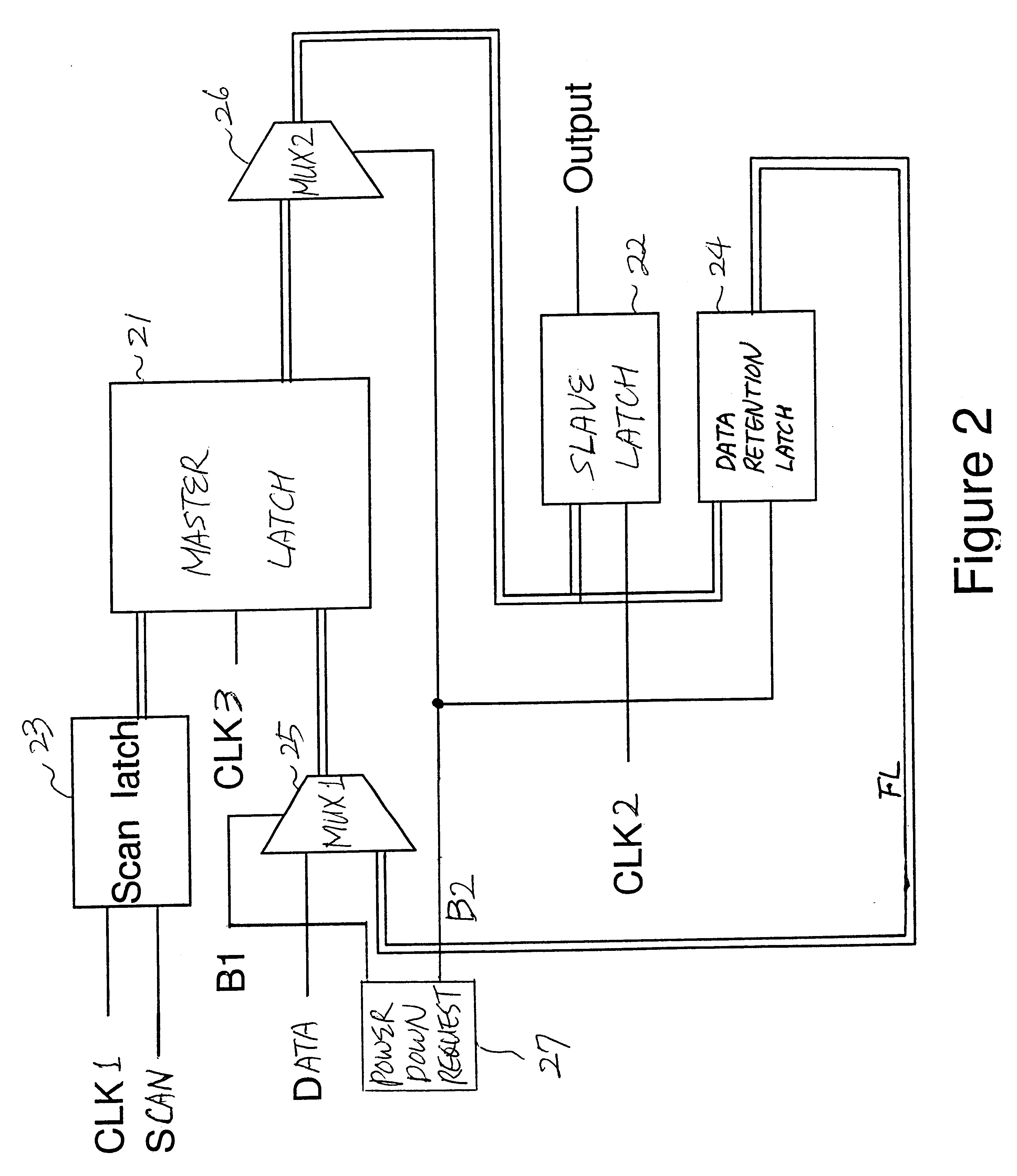Data retention registers
a data retention and register technology, applied in the field of data processing systems, can solve the problems of data retention registers losing data preserved therein, -threshold voltage transistors not being able to provide the same speed as normal threshold voltage transistors, and typically subject to battery life limitations of electronic devices
- Summary
- Abstract
- Description
- Claims
- Application Information
AI Technical Summary
Benefits of technology
Problems solved by technology
Method used
Image
Examples
Embodiment Construction
Detailed illustrative embodiments of the present invention are disclosed herein. However, specific structural and functional details disclosed herein are merely representative for purposes of describing preferred embodiments of the present invention.
Referring to FIG. 2, there is provided a preferred embodiment of a data retention system according to the present invention. In FIG. 2, a master latch 21 and a slave latch 22 are provided to hold data in a like manner as typical master-slave latches do. A scan latch 23 connected to the master latch 21 is also a typical scan latch for scanning data during a test period. A data retention latch 24 is added to the master-slave latches 21, 22, for preserving data in a sleep mode.
The data retention system also includes two multiplexers 25, 26. A first multiplexer 25 is connected between the master latch 21 and the data retention latch 24, and a second multiplexer 26 is connected between the master latch 21 and the slave latch 22 or the data re...
PUM
 Login to View More
Login to View More Abstract
Description
Claims
Application Information
 Login to View More
Login to View More - R&D
- Intellectual Property
- Life Sciences
- Materials
- Tech Scout
- Unparalleled Data Quality
- Higher Quality Content
- 60% Fewer Hallucinations
Browse by: Latest US Patents, China's latest patents, Technical Efficacy Thesaurus, Application Domain, Technology Topic, Popular Technical Reports.
© 2025 PatSnap. All rights reserved.Legal|Privacy policy|Modern Slavery Act Transparency Statement|Sitemap|About US| Contact US: help@patsnap.com



